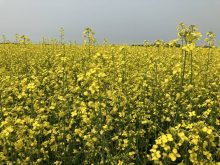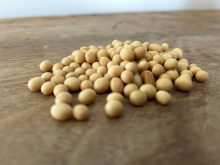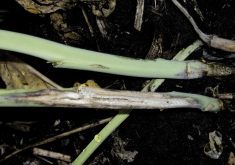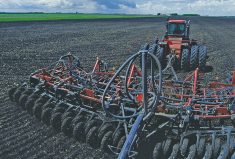Researchers want to build a better wall — at a cellular level — to thwart clubroot.
Of the dozens of canola varieties, only eight have resistance to the fungus-like pathogen and all of them are now showing signs of losing resistance, said Gary Peng, a plant pathologist at Agriculture and Agri-Food Canada’s research centre in Saskatoon.
He likens clubroot to the flu with a new influenza vaccine needing to be developed every year because the flu virus mutates.
“Single gene resistance is not going to be the long-term solution,” Peng said in a recent news release from Canadian Light Source. “We need to find new resistant genes and use them efficiently. It is important to have resistance diversity in our arsenal because we know that a single gene will not be long lasting.”
Read Also

Hail research hopes to benefit potato growers
Alberta research scientist measures hail storm and heat dome affects on potato crops
In a bid to develop new sources of resistance, Peng is using the Canadian Light Source to understand how resistance works at a cellular level. (The Canadian Light Source, also in Saskatoon, is the country’s only synchrotron — a device the size of a football field that produces light by using radio frequency waves and powerful electromagnets to accelerate electrons to nearly the speed of light.)
Using the mid-infrared beamline at the facility, Peng and other researchers examined the roots of canola varieties — both those susceptible to clubroot and ones that are resistant. That allowed them to monitor biochemical changes in the cell walls in roots under attack from clubroot.
“The purpose of the research was to help with our resistance strategy to combat the disease by looking at the disease from a different angle to confirm what was initially identified as a mechanism,” said Peng.
When attacked by clubroot, canola roots start changing by producing more of the components that build up the strength of cell walls.
“The data indicates that several cell-wall components, including lignin and pectin, may play a role in defence responses against clubroot,” Peng wrote in a paper published in the International Journal of Molecular Sciences.
The presence of clubroot “enhanced the expression of most genes involved in lignin biosynthesis” and this was most pronounced in resistant varieties.
Since clubroot causes swelling on the roots that eventually kills the plant, finding a way to strengthen roots is the cornerstone of the strategy for managing the disease, said Peng.
But since this line of research is in its early stages, farmers need to use management techniques to combat the disease in the meantime, he said. That approach centres on using resistant varieties, lengthening rotations, and trying to prevent transfer of soil from infected fields through cleaning equipment.















